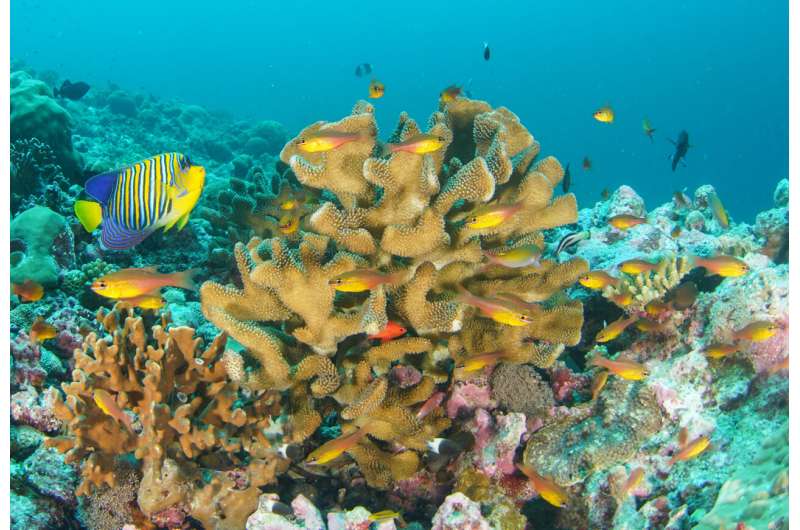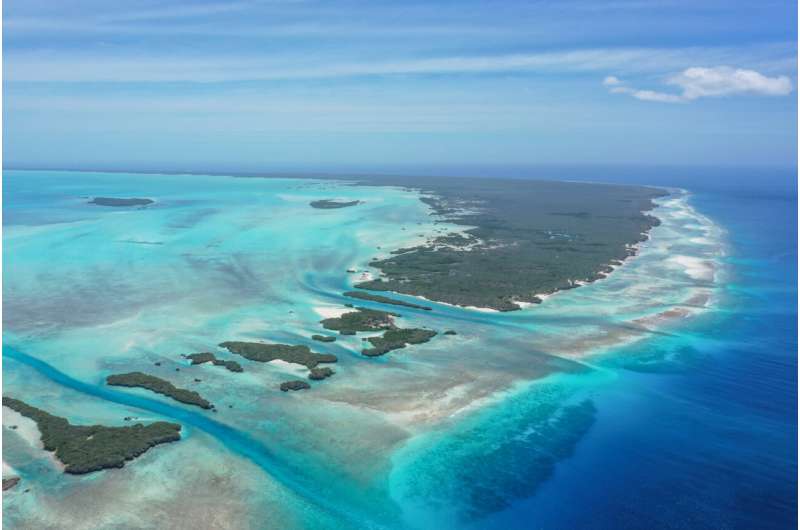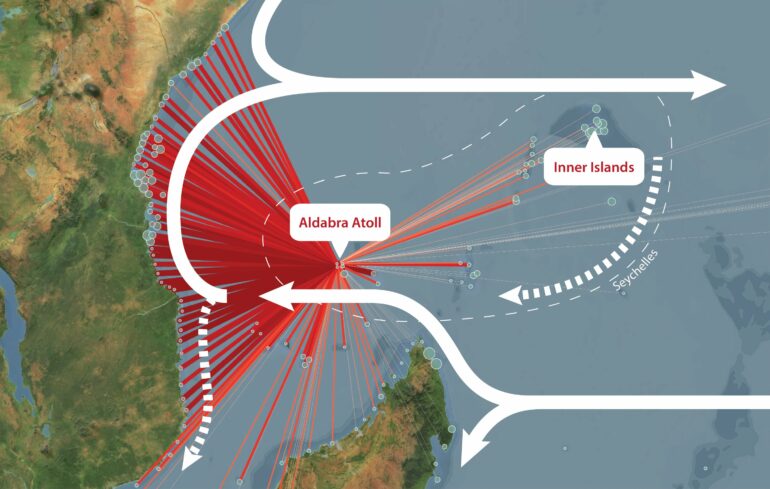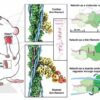New research has revealed that, despite being scattered across more than a million square kilometers, remote coral reefs across the Seychelles are closely related. Using genetic analyses and oceanographic modeling, researchers at Oxford University have demonstrated for the first time that a network of ocean currents scatter significant numbers of larvae between these distant islands, acting as a “coral superhighway.”
These results are published in Scientific Reports.
Dr. April Burt (Department of Biology, University of Oxford, and Seychelles Islands Foundation), lead author of the study, said, “This discovery is very important because a key factor in coral reef recovery is larval supply. Although corals have declined alarmingly across the world due to climate change and a number of other factors, actions can be taken at local and national scale to improve reef health and resilience.
“These actions can be more effective when we better understand the connectivity between coral reefs, by—for instance—prioritizing conservation efforts around coral reefs that act as major larval sources to support regional reef resilience.”
The researchers collaborated with a wide range of coral reef management organizations and the Seychelles government to collect coral samples from 19 different reef sites. A comprehensive genetic analysis revealed recent gene flow between all sample sites—possibly within just a few generations—suggesting that coral larvae may be frequently transferred between different populations. The results also hinted at the existence of a new cryptic species of the common bouldering coral, Porites lutea.
The genetic analyses were then coupled with oceanographic modeling, simulating the process of larval dispersal. These simulations allowed researchers to visualize the pathways coral larvae take to travel between reefs across the wider region, and determine the relative importance of physical larval dispersal versus other biological processes in setting coral connectivity.

A coral reef in Seychelles. © Christophe Mason-Parker
This revealed that dispersal of coral larvae directly between reefs across the Seychelles is highly plausible. For example, coral larvae spawned at the remote Aldabra atoll could disperse westwards towards the east coast of Africa via the East African Coastal Current. From here, they would then travel north along the coast, with some potentially even reaching the South Equatorial Counter Current, which could bring them eastwards again back towards the Inner Islands of Seychelles.
While these long-distance dispersal events are possible, it is likely that much of the connectivity between remote islands across the Seychelles may be established through “stepping-stone” dispersal. This suggests that centrally located coral reefs in Seychelles, and possibly East Africa, may play an important role in linking the most remote islands.
Dr. Noam Vogt-Vincent (Department of Earth Sciences, University of Oxford, now based at the Hawai’i Institute of Marine Biology) who led the oceanographic modeling, said, “This research suggests that the broad agreement between predicted connectivity and observed genetic patterns supports the use of such larval dispersal simulations in reef system management in Seychelles and the wider region. These simulations also allow us to investigate how regular these connectivity patterns are in time, because a regular larval supply will be essential for reef recovery in the face of climate change.”
The modeling data can be visualized in a new app. With just one click, you can see how coral larvae from Seychelles potentially reach reefs across the whole region. The researchers suggest that this data could help identify major larval sources to be prioritized for inclusion in marine protected areas or active reef restoration efforts.

Aldabra atoll, the largest coral reef system in Seychelles. © Christophe Mason-Parker
Professor Lindsay Turnbull (Department of Biology, University of Oxford), senior author, said, “This study couldn’t come at a more timely moment. The world is once again watching, as El Niño devastates coral reefs throughout the Indian Ocean. Now we know which reefs will be crucial to coral recovery, but we can’t pause in our commitment to reducing greenhouse gas emissions and stopping climate change.”
Dr. Joanna Smith and Helena Sims (The Nature Conservancy), who support the Seychelles Marine Spatial Plan Initiative, said, “The WIO coral connectivity study, by illustrating the connectivity of reefs within a network, can be used at national and regional scales in the Western Indian Ocean for Marine Protected Area design and management, as well as directing restoration activities. We look forward to using the results and Coral Connectivity app to inform implementation of the Seychelles Marine Spatial Plan.”
More information:
Integration of population genetics with oceanographic models reveals strong connectivity among coral reefs across Seychelles, Scientific Reports (2024). DOI: 10.1038/s41598-024-55459-x
Provided by
University of Oxford
Citation:
A coral superhighway in the Indian Ocean (2024, March 12)



